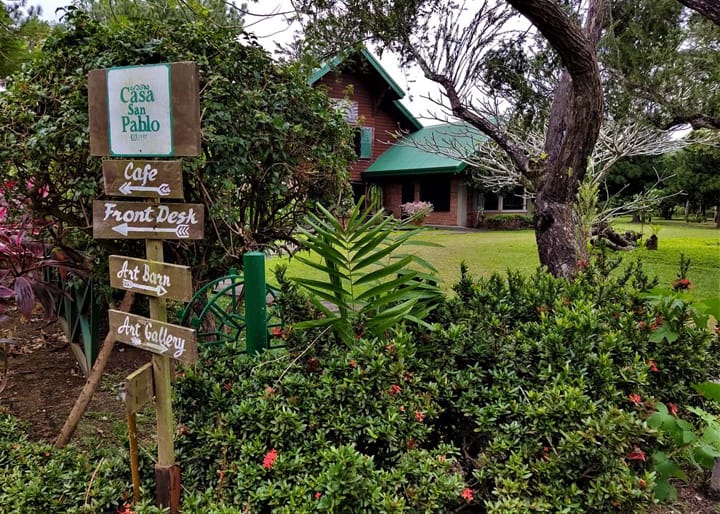
A road trip to the Southern Tagalog Region has been a favorite pastime since time immemorial not just due to its proximity to the metropolis, but more so because of its exciting and diverse attractions.
Popularly known as Calabarzon, it is composed of Cavite, Laguna, Batangas, Rizal and Quezon provinces which are brimming in rich cultural heritage, natural wonders, delectable dishes, family-oriented theme parks, recreational enclaves, luxe accommodation, and everything in between.

With easing of the quarantine classification in most areas, Metro Manilans have begun scouring the edges of the region to uncover some of its best-kept secrets, many of which are remote and nature-themed tourist spots away from the madding crowd.
To many travelers still weary of the Covid-19 pandemic, close-to-nature places which are less dense and has plenty of open spaces are the preferred low-risk destinations. Below are two southern secrets which are ideal family getaways hiding from plain sight in the past decade.
San Pablo. Monikered as the City of Seven Lakes, it is also a resort town with the numerous spring pools which dot the outlying villages. Despite its innate charm, it has been hiding from the limelight much like the patron saint it was named after—St. Paul the First Hermit.
It was only in the early-2000s that it began shedding its hermit-like character and began luring footloose wanderers looking for lesser-known playgrounds.

Playing a huge part in putting the city in the tourist map is Casa San Pablo, an intimate country-style boutique lodging which is also a center for local art, culture, events, and gustatory adventure. Guests are welcomed in the sprawling property’s manicured lawns, lush greenery and structures which exude an old world charm.
With its strategic location, it is an ideal homebase in exploring San Pablo’s other must-see spots—the quaint Sulyap Gallery Cafe, the newly restored Fule Museum, Jasif Agroshop, and Carlito’s Atelier. It is best to spend the night here to feel the vibe of its evolving rurban nocturnal lifestyle at its ubiquitous mami stores and local coffee shops.
No less than Tourism Secretary Bernadette Romulo Puyat was captivated by the city’s eclectic character, that it was designated as the hub of the Laguna Green Corridor, an innovative scheme of which consolidates a worry-free, health protocol-compliant and app-based tour package.

Set to be launched this April, the said itinerary is composed of the Sampaloc Lake, the biggest and most accessible of the city’s seven lakes, which has home-grown dining outlets, a viewing boardwalk and 3.7-km circumferential which you can easily bike or drive around.
Overlooking it is the tree-canopied Leonila Park which was recently spruced up, and is the best vantage point to the placid lake.
The Green Corridor will also run through Tayak Adventure Nature And Wildlife (TANAW) Park in nearby Rizal town, the historic Nagcarlan Underground Cemetery, and Liliw town which is famed for its native slippers and uraro (arrow root) delicacy.
Sampaloc. This obscure municipality is a serendipitous discovery in the highlands of Quezon, which is just about a 30-minute zigzag drive from Lucban, home of the famed Pahiyas Festival.
Overshadowed by its popular touristic neighboring towns, it is coming out of its cocoon and beckons travelers who want to rough it out in a raw and rustic outdoor experience.
A must-visit is Lake Dondre, a roadside green body of water where you can go fishing and dine delectable provincial specialties aboard a bamboo raft, most notably the sinugno, grilled tilapia and soaked in coconut milk and topped with vegetables.
D Farm is a vast private farm and ranch estate which is like a slice of Baguio with its pine trees and cool climate the whole year round. Tucked within it is a bigger lake called Linggo-Linggo where guests can paddle kayaks leisurely.
With paved roads from the población to the interior barangays, rough and tumble type of tourists can reach the other natural spots such as Malaog Cave and Underground River, Pugto Pugto Canyons, Lamesang Bato, Tangub Cave, and the three waterfalls of Asedillo, Hangga, and Buho, for a refreshing dip and hydromassage.
With meandering uphill and downhill roads, this frontier also a challenging route which can test the mettle of biking aficionados.
As the tourism industry is still in its infancy, visitors wishing to stay overnight can opt for homestays, or pitch tent and camp out at Lake Dondre and D Farm, which can be facilitated by the municipal tourism office. With some of the villages still unelectrified, it is an enticing back-to-the-basics adventure which may blend well with the travel trends in the “new normal” regime.
Much like the tamarind tree it was named after, Sampaloc is a tasty sour and sweet experience which will leave you longing for more.
Article and Photo originally posted by Business Mirror last February 21, 2021 and written by Bernard L. Supertran







More Stories
Weekend wanderer: This walk in Manila is a trip to art and to our past
Enjoy no-frills camping in the great outdoors in Tanay
Landco Pacific raises the bar for premium resort and leisure living